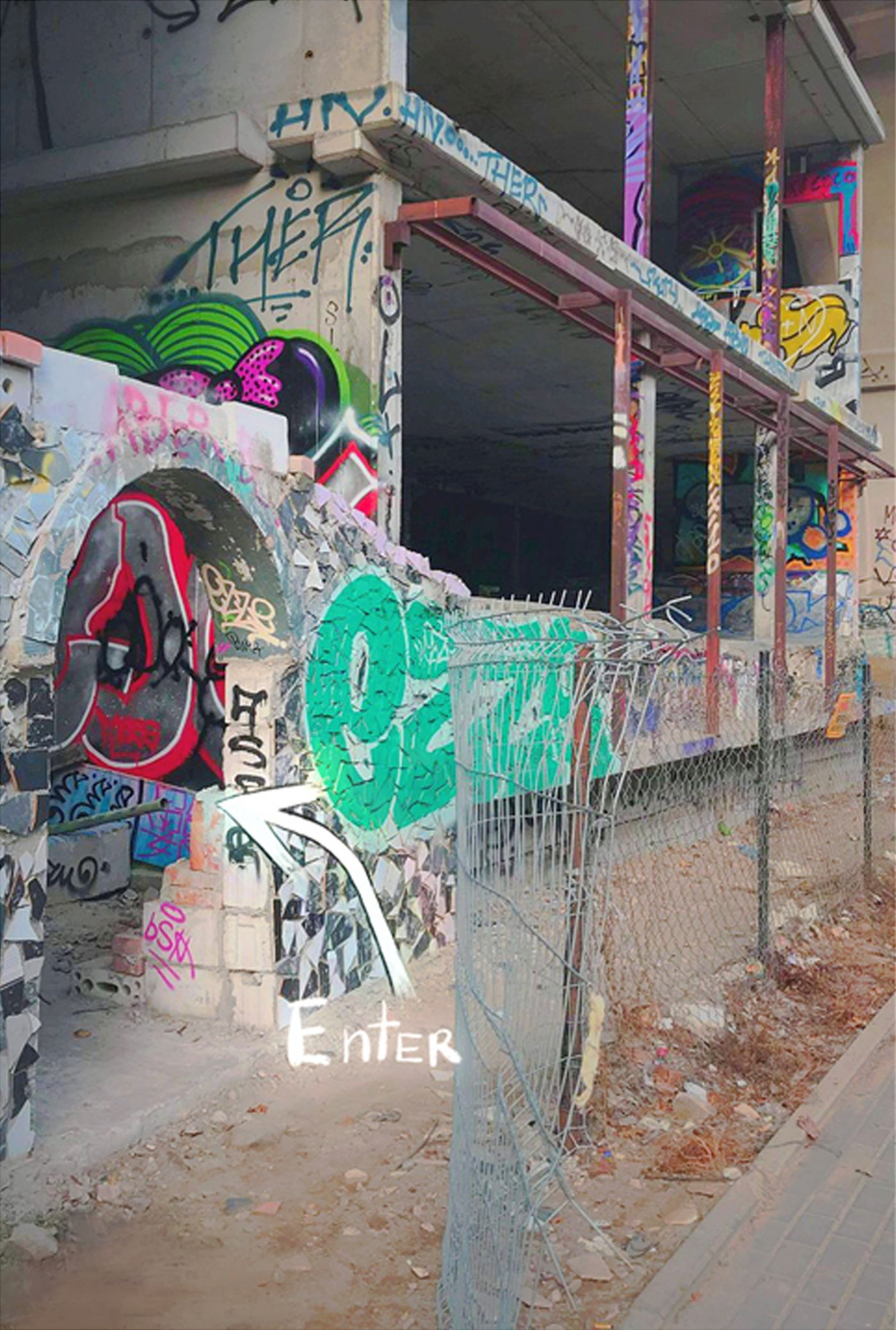A Guide to the Future
A workshop for the IF – Social Design for Sustainable Cities conference, Warsaw Oct. 2020
A Guide to the Future in 7 different No Man’s Land in Warsaw, Dublin and Isfahan and return
“No Man’s Land is a product of planning. Without planning, there is no No Man’s Land. But once planners realize they have planned a No Man’s Land, its end is already nigh. It is even renamed then – as »a dysfunctional zone«.“ *

(c) unofficial Skate Park under Poniatowskiego Bridge, 00-381 Warsaw Anastasiia Haidar (UA) Daria Samarska (UA) Lisa Sanceau (FR)
Being undetermined in function, these “No Man’s Land” offer a high openness and freedom to be transformed and appropriated. As undisciplined spaces they become urban grounds, which invite improvisation and open up various opportunities meeting the existential needs of its informal users.
Students joining this workshop were introduced to methodology by the Social Design Studio Vienna. During our collective work process a collection of “No Man’s Land” grew.
Space is an increasingly contested resource in our cities and the discovery tour in the workshop’s outcome – a guide to the future – showed how these resources could be made available for the community.
Young international creatives from Belgium, Belarus, Ireland, Iran, Ukraine, Russia, Spain, France and Poland undertook an exploration of their urban neighbourhood – analogue and digitally – and (re-)discovered examples of “No-Man’s-Land” located in the middle of the cities they live in. With high attention they went below the surface of the city with its daily life, its daily functions and regulations. Within a dense urban fabric they discovered free spaces, indeterminate spaces, different spaces, open for diversity and civic engagement.
The guide is opening up spaces but is also very much respecting their intimacy and their secrets. The contributors brought in new ideas of what they think is missing or how the quality of the spaces could be preserved. Seeing these “No-Man’s Land” with their fresh eyes means communicating the qualities of the spaces and that their loss would also be a loss of nothing less than urbanity. The guide also serves as a guide to the future, where such spaces have to be still available and open to free thinking and practice.
This is where democracy, solidarity and creativity can develop.
* Lucius Burkhardt, ‘No Man’s Land’, 1980, In: Why is Landscape Beautiful? The Science of Strollology
Poster contributions of 7 projects realized in the context of the Social Design Studio, exhibited at the Austrian Cultural Forum in Warsaw, in occasion of “IF–Social Design for Sustainable Cities” conference, October 2020
The core question of a “thick description” (C. Geertz) of a given context our work is addressing is closely linked to a reflection on our self-understanding as Social Designers, and, as a result, also on our artistic methodology. We see ourselves confronted with an all too familiar paradoxical situation: to be initiators on the one hand and, so-to-say, to “disappear” in the process and hand it over to those acting in such dynamics on the other hand. Being aware of this paradox, we would like to focus on experiences we are facing respectively are confronted with when we look for examples of place-making in the city or develop strategies to trigger them. A continuous exploration of a given setting – may it be regulations, rituals, wishes of actors, aims of city administration, site-specific built context, planned development or demographical prognosis – is an imperative to any further strategy or undertaking in terms of intervening or triggering a change. In addition to that and based on our fundamental self-understanding that Social Design must remain invisible – since we refrain from designing others – we pursue a working process based on the notion of urban living labs, i.e. testing and learning in real world settings in order to encourage reflection and debate in regards to contemporary socio-spatial issues.
* Belchatow by Zuzanna Zajac and Marlene Hübner
* Car as extinct species by Silvan Hagenbrock and Sophie Bösker
* in-situ-animation by Ivan Pantelic and Bernd Rohrauer
* Nobody is an Island (UBI) by Catalin Betz and Raphael Volkmer
* Construction Choir Collective
* Avatar Pleasures by Theresa Binder, Lena Michalik and Danny Nedkova
Digital workshops conceptualized by
Brigitte Felderer, Christina Schraml and Cosima Terrasse
For
IF – Social Design for Sustainable Cities conference, Warsaw
With
Andrea Fernández Camps (ES), Maéna Corbex (FR), Anastasiia Haidar (UA), Karolina Klepacka (PL), Alick Radziyonava (BY), Romi Paspont (BE), Anna Pertsova (UA), Soudeh Salehi Kahrizsangi (IR), Daria Samarska (UA), Lisa Sanceau (FR), Maksym Shadiy (UA), Vladlen Zabelin (RUS), Stephanie Golden (IE), Yeva Chaikina (UA)
- Time
- October 2020